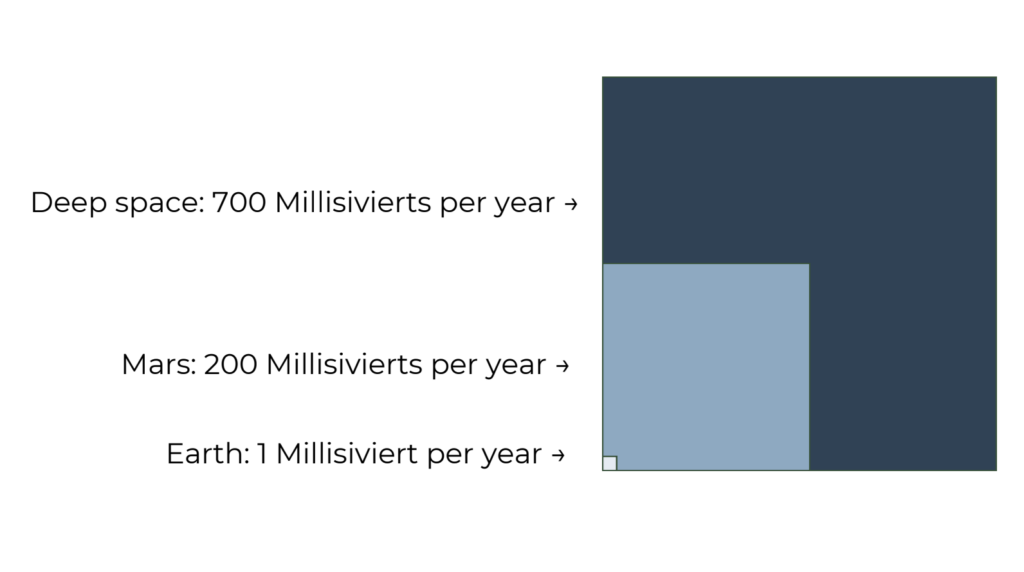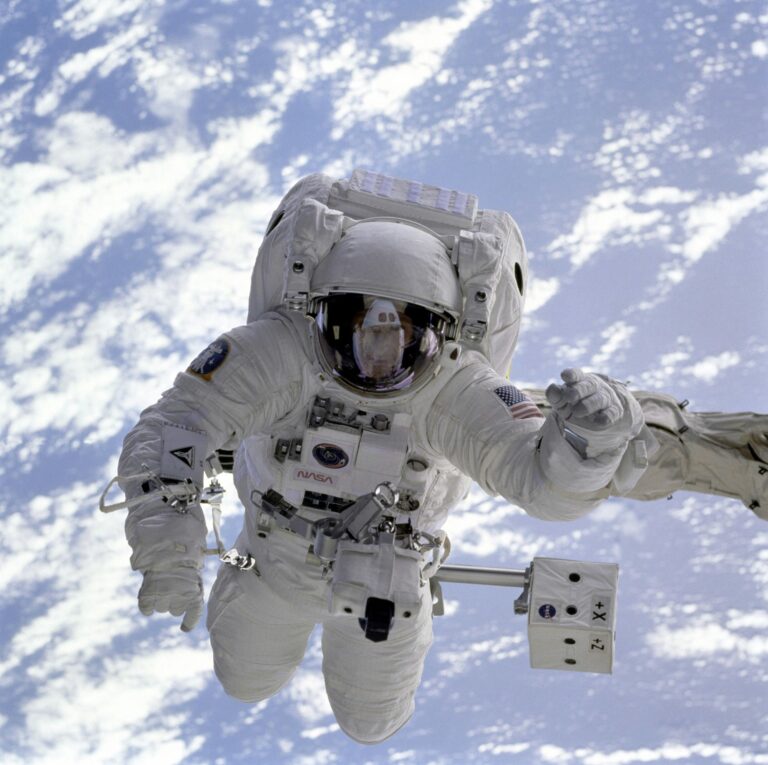Have you ever thought about what happens to an astronauts’ body on a mission to space? Or how a stay in space can impact the mental health of an individual? Well, you’re about to find out! 😉
Is being weightless really that cool?
You may have seen videos of astronauts floating inside their spacecraft and thought to yourself: “Wow, that’s so cool!” And although it may seem fascinating at first, the repercussions of so-called weightlessness or rather microgravity aren’t that glamorous at all.
The first obstacle astronauts face, when venturing into microgravity, is something we’ve probably all experienced before: motion sickness. Have you ever been on a car ride and started to feel nauseous? This is actually a result of your senses not matching up. What you see is not what you feel. Exactly the same thing happens to astronauts upon entry to space, resulting in nausea, headache and vomiting. Luckily, after a short period of time, astronauts adapt to the circumstances of weightlessness and can continue their stay without symptoms of motion sickness.
“When we first get to space, we feel sick. Your body is really confused. And so, you know, you’re dizzy, your lunch is floating around in your belly ‚cause you’re floating, […] and what you see doesn’t match what you feel. So you want to throw up.”
Chris Hadfield
Moreover, due to the absence of gravity the liquids in the human body, such as blood, shift toward the upper body, which is a process is commonly referred to as the ‘headward fluid shift’. It becomes apparent as a swelling of the upper body parts with a simultaneous shrinkage of the lower extremities, commonly called ‘chicken legs’. Other symptoms include headache, visual impairment, dehydration, and facial puffiness.
One of the most severe changes to the human body are muscle and bone loss, which likely occur due to immobilization and the disuse of these body parts. You can kind of imagine it like a person that lays in bed the entire day, they would probably also start to lose muscle and bone mass pretty quickly. However, because of the loss of muscle and bone mass, astronauts can’t even bear their own body weight anymore upon their return to Earth, hence they can’t walk and actually have to be carried out of the space shuttle.
Invisible but fatal: cosmic radiation
Another risk for spaceflight, which may be invisible but significantly inhibits the evolution of space exploration, is cosmic radiation.
Cosmic radiation has about a gazillion negative effects on the human body, but just to name a few, it can destroy cells of the central nervous system leading to cognitive dysfunction and even behavioral changes. Space radiation is also able to damage our DNA by ripping apart the strands, which can further lead to the formation of cancer. Another possible outcome of radiation exposure are cataracts, which impact astronauts’ vision.
The miniscule white square represents the amount of radiation exposure we experience in a year on Earth, the light blue one demonstrates radiation levels on Mars, and the dark blue square illustrates how much radiation one would be exposed to in deep space, which is unbelievably 700 times the radiation we experience on Earth.

Navigating the mental challenges of spaceflight
Having discussed the physical effects, let’s delve into the psychological ones. Due to the long working hours, extreme pressure to perform, homesickness, confinement, disrupted circadian rhythm, monotony, and conflicts with other crew members, the mental health of an individual can be affected negatively. All of these factors can consequently cause depression, anxiety, dementia, hallucinations, and sleep deprivation.
Beside the personal issues that come along spaceflight, there are also interpersonal conflicts that may arise. For instance, the Russian Soyuz 21 mission was terminated prematurely because of a physical altercation between two astronauts and an inappropriate attempt at romantic behavior, where one crew member tried to kiss his female colleague. This may be an extreme example, however it demonstrates that astronauts are still just humans and that team dynamics are essential for a successful mission.
Even though there’s all these major challenges that spaceflight comes with, researchers are making extreme efforts to discover effective countermeasures and make everything work. Still, spaceflight is one of the best examples that through collaboration and shared motivation we as humans are able to do anything, even cross the boundaries of our own planet.











Was sagst du dazu?